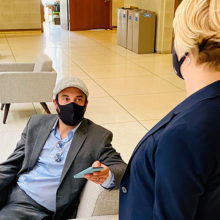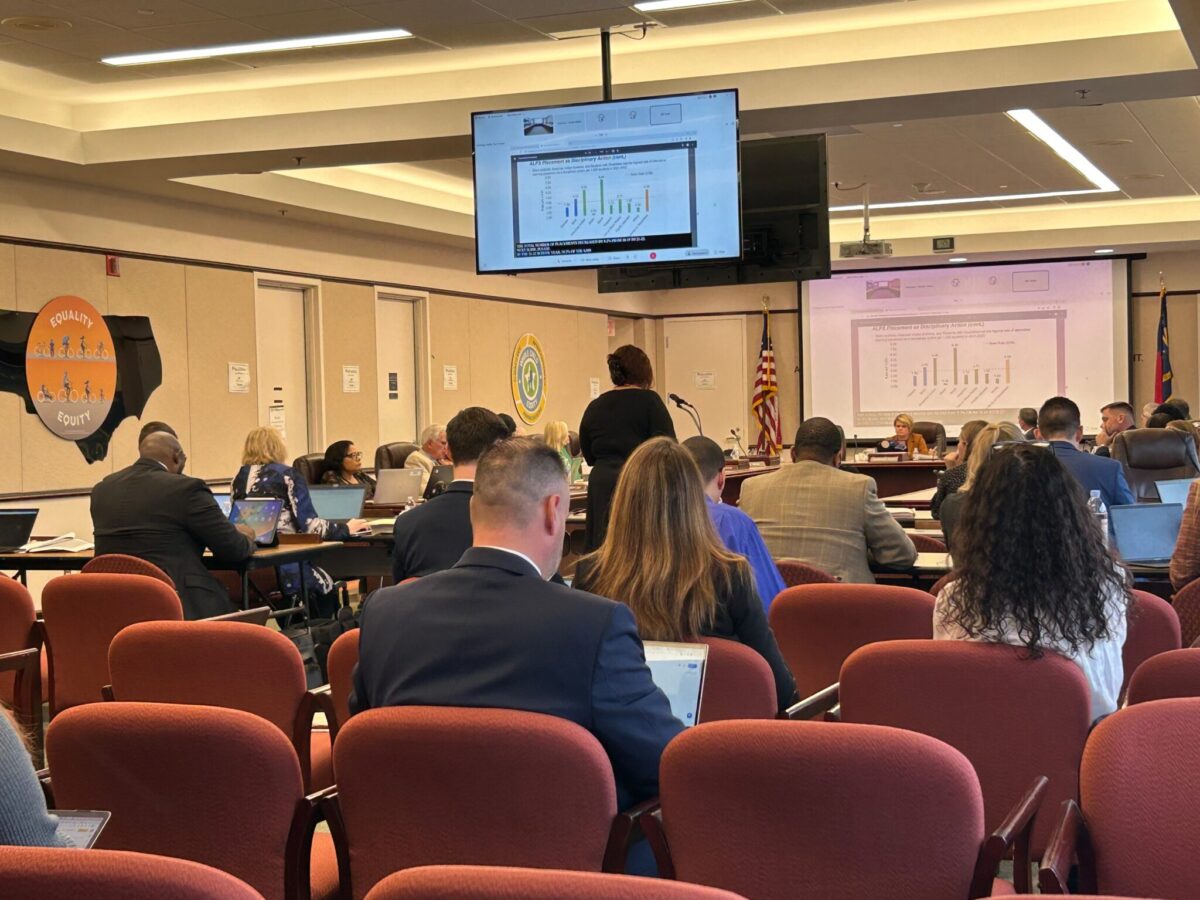

Share this story
- Crimes and violence in schools across the state saw a large jump from pre-pandemic numbers. State Board of Education members discussed how discipline for students disproportionately focuses on students of color. #nced
- “It assumes that either there’s something wrong with the students … or we’re assuming that there’s something wrong with the system that’s playing itself out in racial terms that are undeniable," @JEFordNCTOY said. #nced
|
|
Schools across North Carolina saw a dramatic increase in crime and violence in 2021-22 compared to 2020-21, though rates were particularly low that year thanks to COVID-19. However, rates jumped considerably in 2021-22 even from pre-pandemic levels.
In 2021-22, there were 11,170 total acts of crime and violence, up from 1,535 the year before during the height of COVID-19, according to the annual Consolidated Data Report released this week.
However, the total acts were also up considerably from the 7,158 in 2019-20, pre-COVID-19. Up until that point, the rates of crime and violence had been dropping every year.
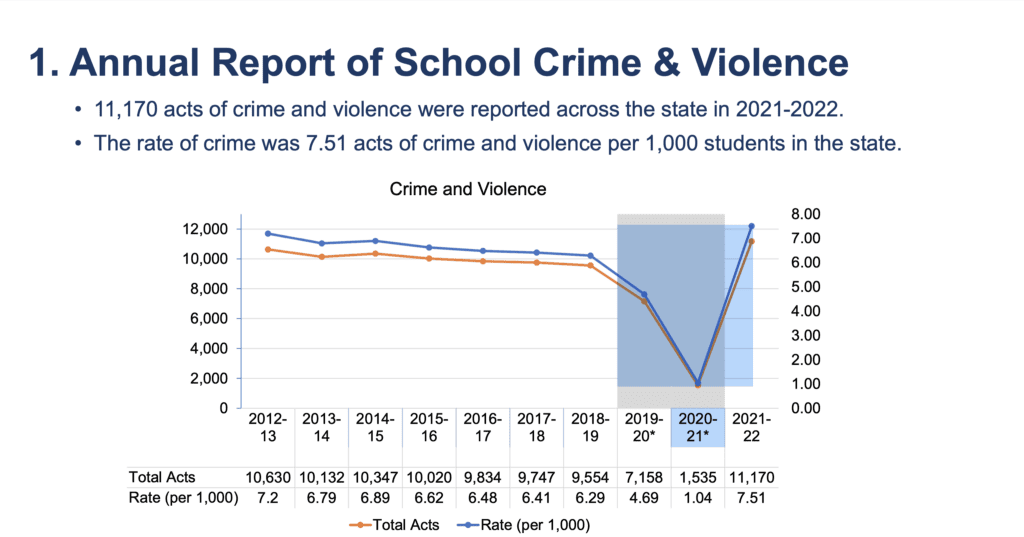

A point of discussion amongst the State Board of Education at Wednesday’s meeting was student discipline when it comes to subgroups of students. The short-term suspension and expulsion rates were particularly high when it came to Black and American Indian students, and students of two or more races.
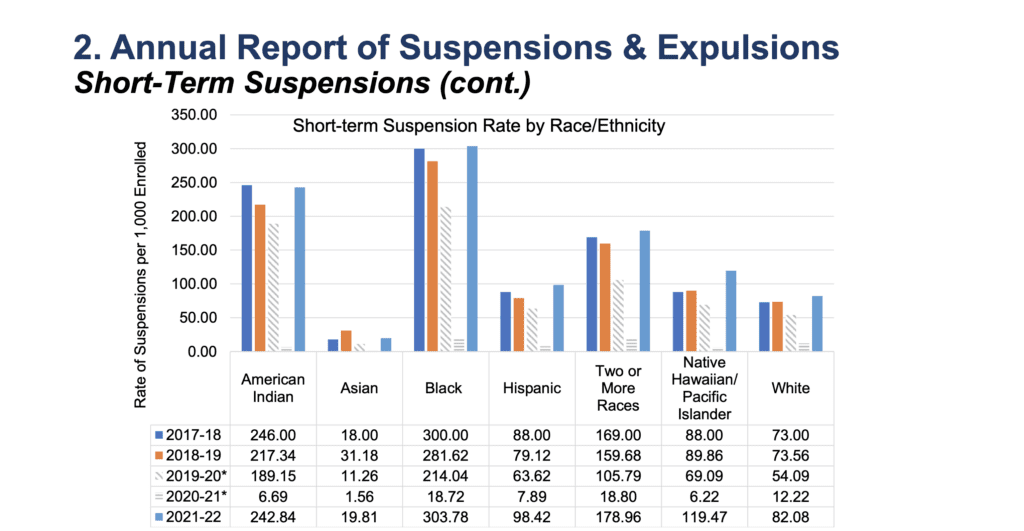

The long-term suspension and expulsion rates were particularly high among Black, and Native Hawaiian/Pacific Islander students.
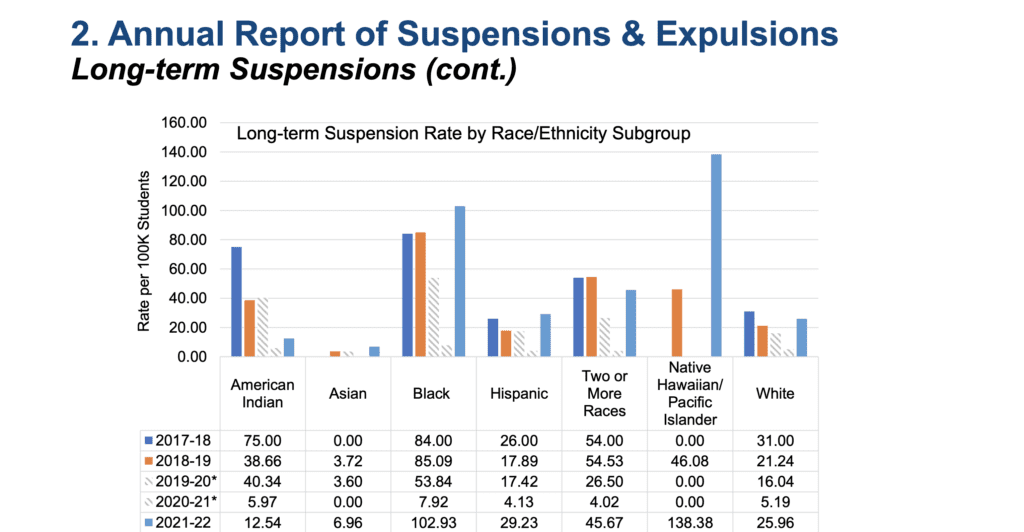

And below is the data on in-school suspensions, and alternative learning program and school placements.
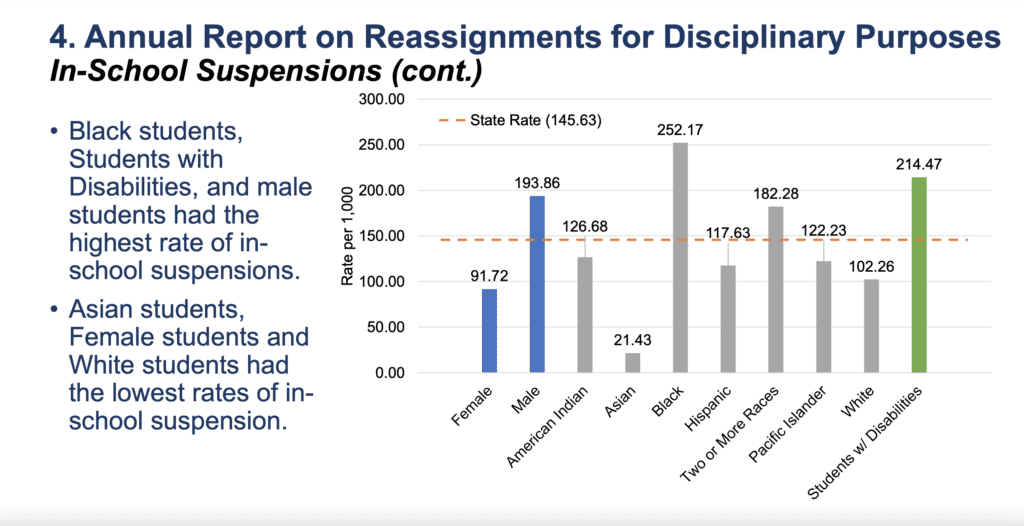

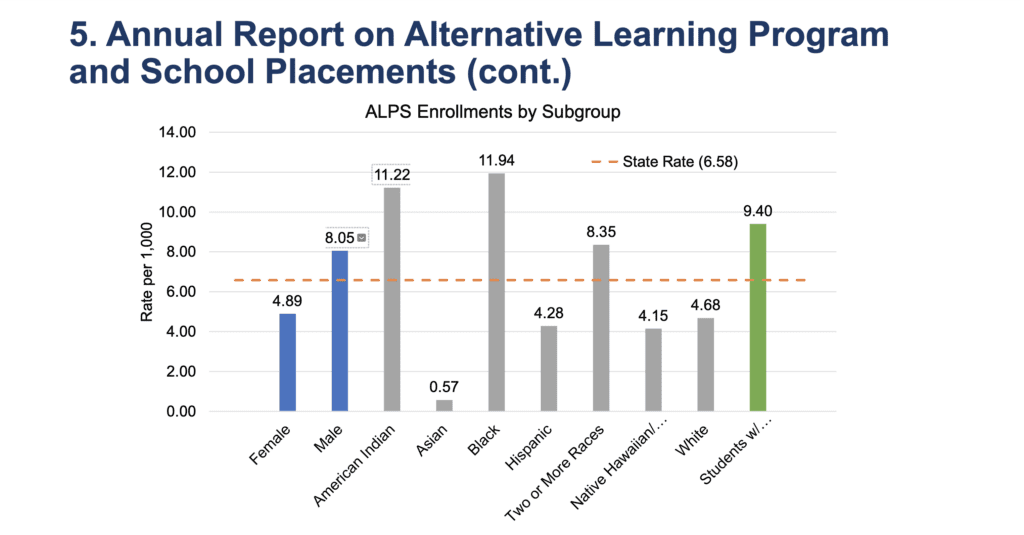

Here are the drop-out rates by subgroup.
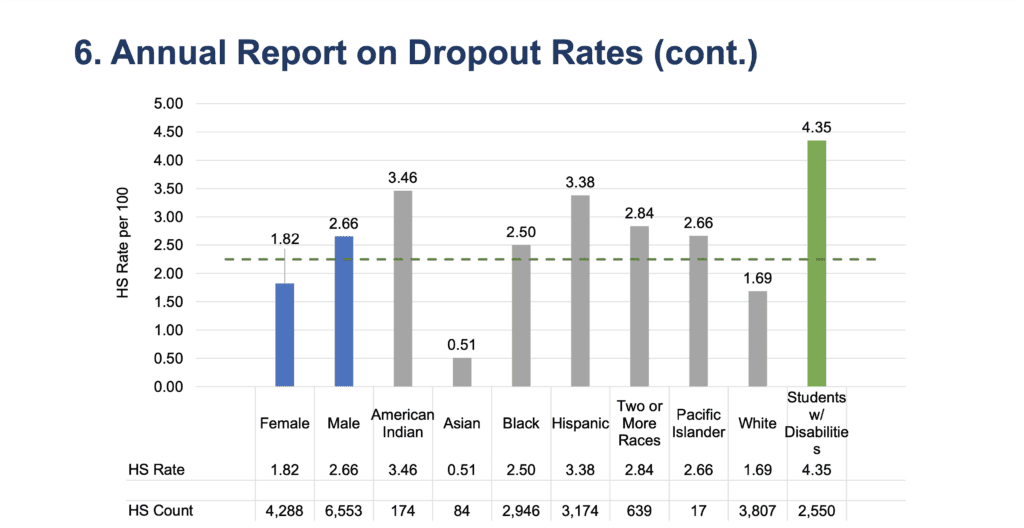

Board member James Ford reflected during the meeting on how he continues to be bothered by the data when it comes to students of color. He has been attending Board meetings in some capacity since serving as an advisor to the Board as teacher of the year back in the 2014-15 school year.
“I have to confess … I can feel my heart rate increasing, my blood pressure increasing. I just get nauseous,” he said. “It assumes that either there’s something wrong with the students … or we’re assuming that there’s something wrong with the system that’s playing itself out in racial terms that are undeniable.”
He said that if you assume that student subgroups misbehave at a similar rate — something he acknowledges not everyone believes — then it is clear that Black students and other students of color are being treated unfairly.
“I grow tired of seeing the same thing over and over and over again,” he said. “I don’t feel a sense of urgency, just in general.”
Board member John Blackburn asked the purpose of separating out students by subgroups.
“If it serves a purpose that is not beneficial to the students of North Carolina, it is very concerning,” he said.
Karen Fairley, the executive director of the Center for Safer Schools, said separating out students by subgroup is important in order to address what is happening.
She said her team is working with school resource officers and other school personnel to address cultural diversity as it relates to this issue.
“In order for me to identify what those cultures are, I have to go through and mark who is who,” she said.
State Superintendent Catherine Truitt said the issue of student discipline is complicated and can’t be seen in strictly racial terms.
“I’m as equally concerned with the students with disabilities,” she said, noting that a school’s inability to meet the need of such students is what can sometimes drive parents from the traditional school system.
“I think this is a really really complicated issue, and to say that this is an issue that can be solved by calling out certain types of people, I don’t think we’re doing our students any good,” she said.
Board Vice Chair Alan Duncan said that one thing the data doesn’t show is a fact that’s generally known: students of color get harsher penalties than their peers for the same infractions.
“It would be great if we could get to a place where we have statewide data on that,” he said. “This is not unique to schools. There are studies in law practices that show the exact same things.”
Lt. Gov. Mark Robinson spoke at Thursday’s Board meeting when the issue was revisited. He is a Republican who has been vocal in his belief that students aren’t held accountable for their behavior and skeptical of a focus on equitable disciplinary outcomes for students.
“I think there’s a lot of dishonesty when we talk about that topic,” he said. “There are gonna have to be some deep conversations that are unpleasant and some unpleasant truths are gonna have to be exposed.”
He said there are “deep seated problems that lie outside of schools” that need to be talked about.
These are the crimes and instances of violence reported in state schools.
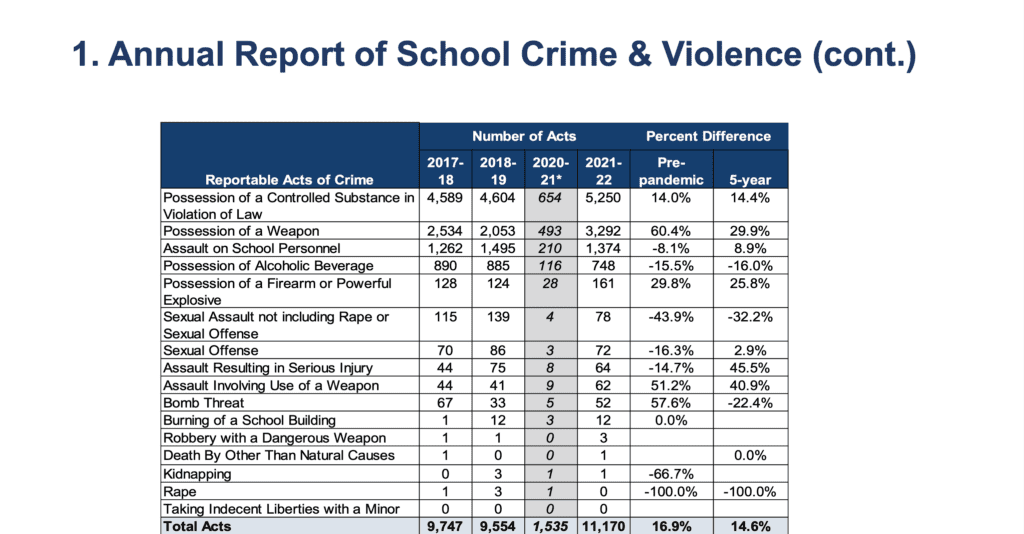

Here are the recommendations from the Center for Safer Schools.
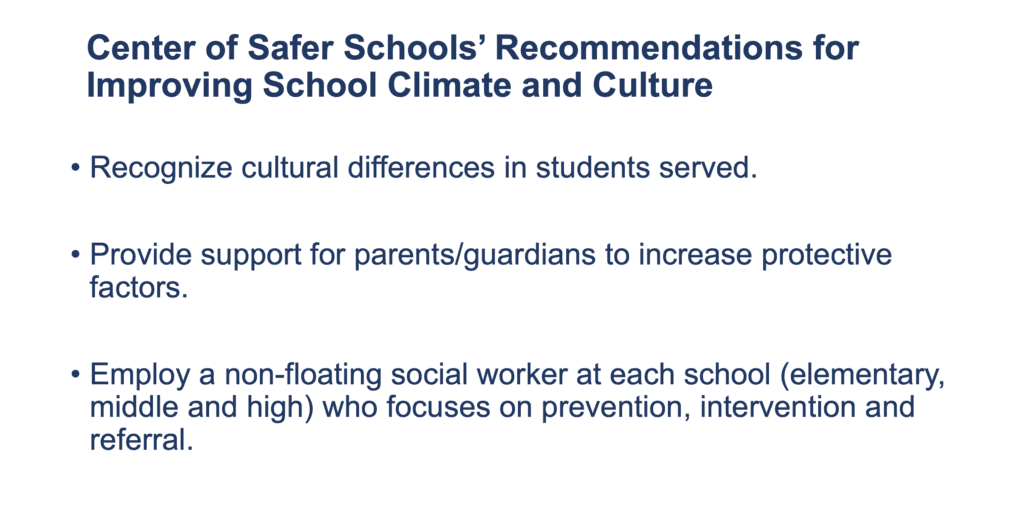

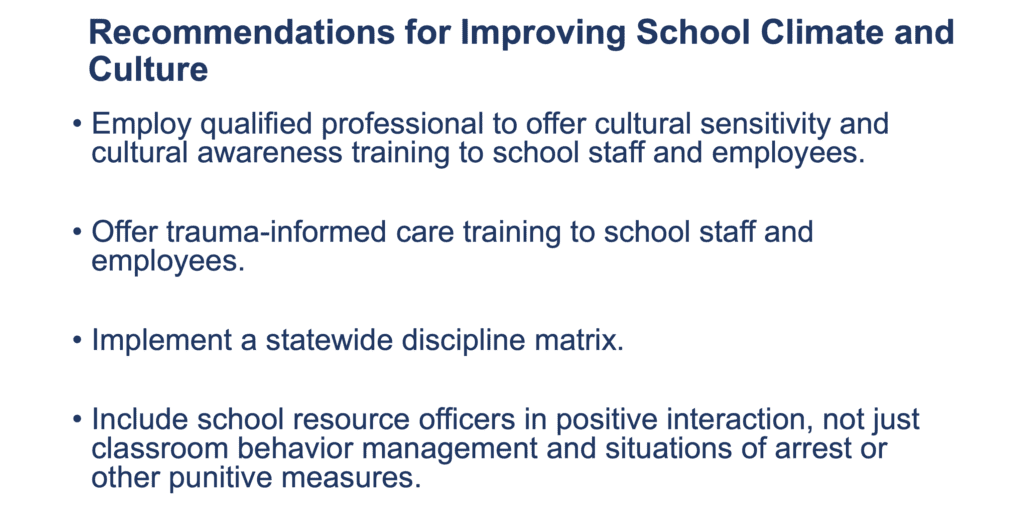

And here are the lessons learned and next steps.
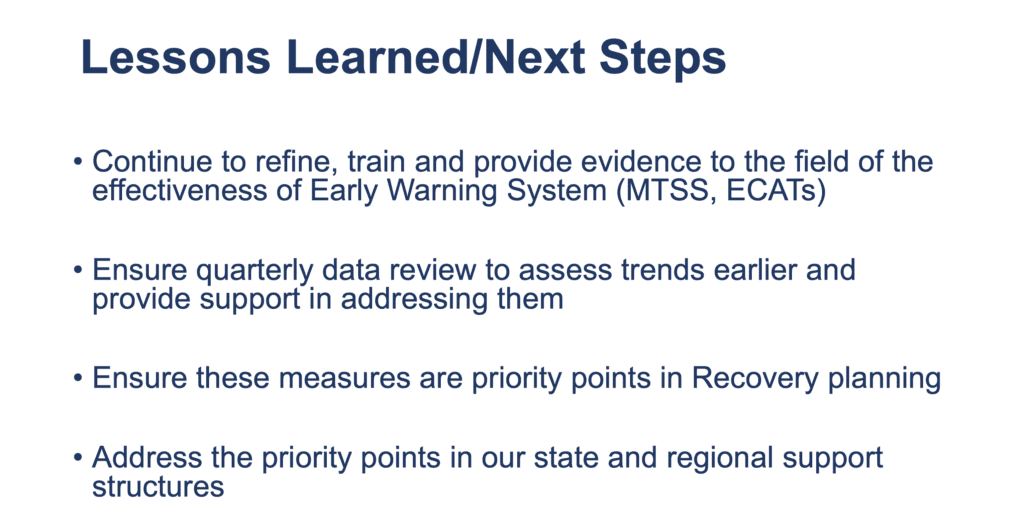

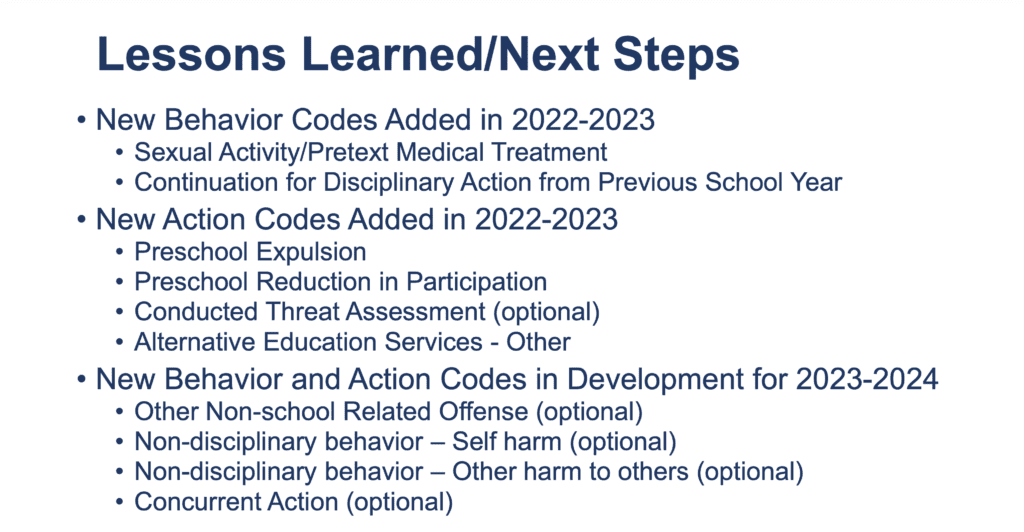

Board member Jill Camnitz asked Fairley if there were examples of schools that are getting it right on school discipline and violence. Board member Wendell Hall referenced this school written about by EducationNC.
Later, Board Chair Eric Davis referenced the following school, also written about by EducationNC.
Revisiting the topic on Thursday, Hall referenced the data, saying, “I like to say the house is on fire. The house is on fire.” He suggested the Board hear more often about this data
Here is the full presentation on crimes and violence and student discipline.
You can see district and school-level data here.
